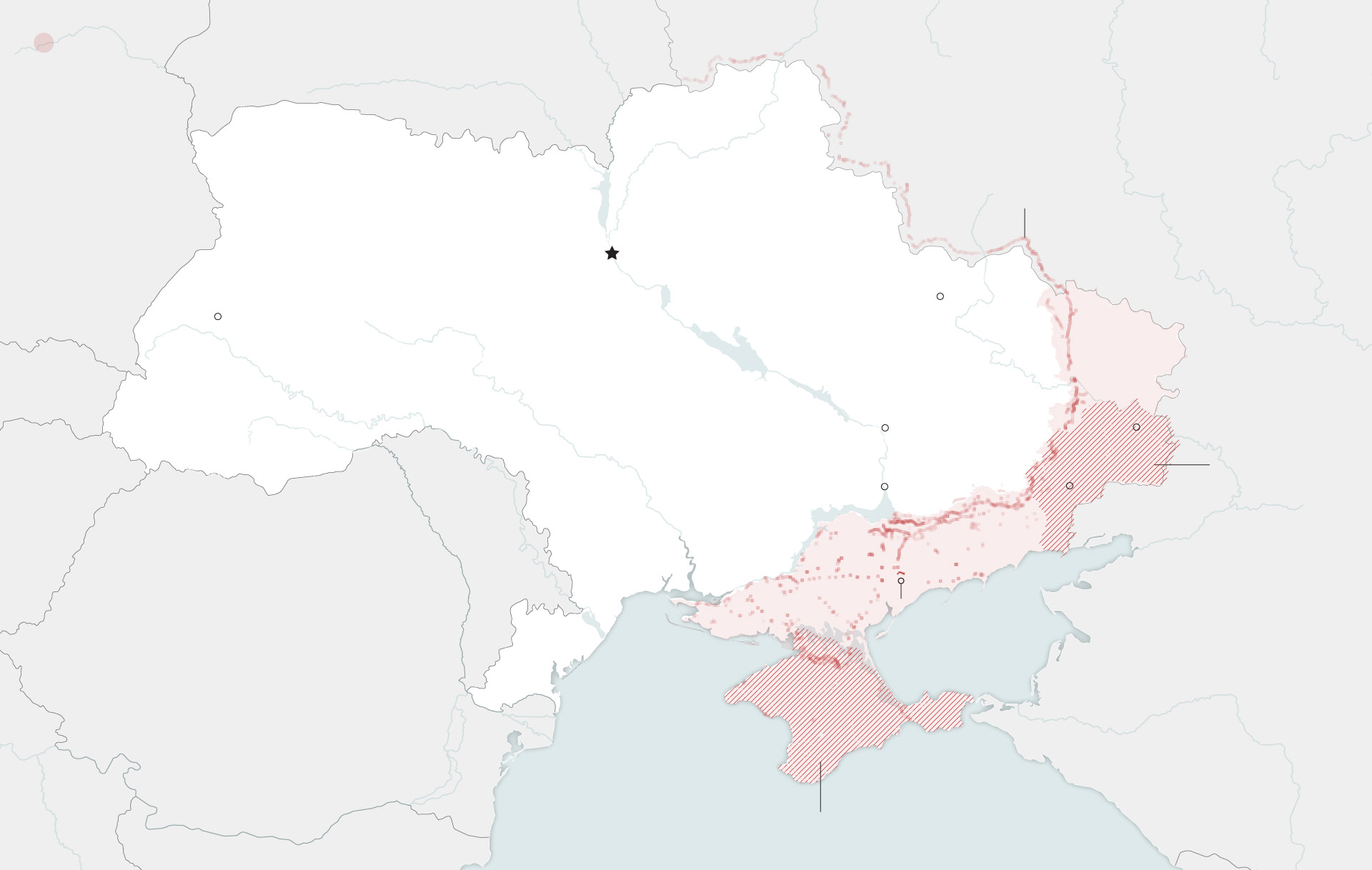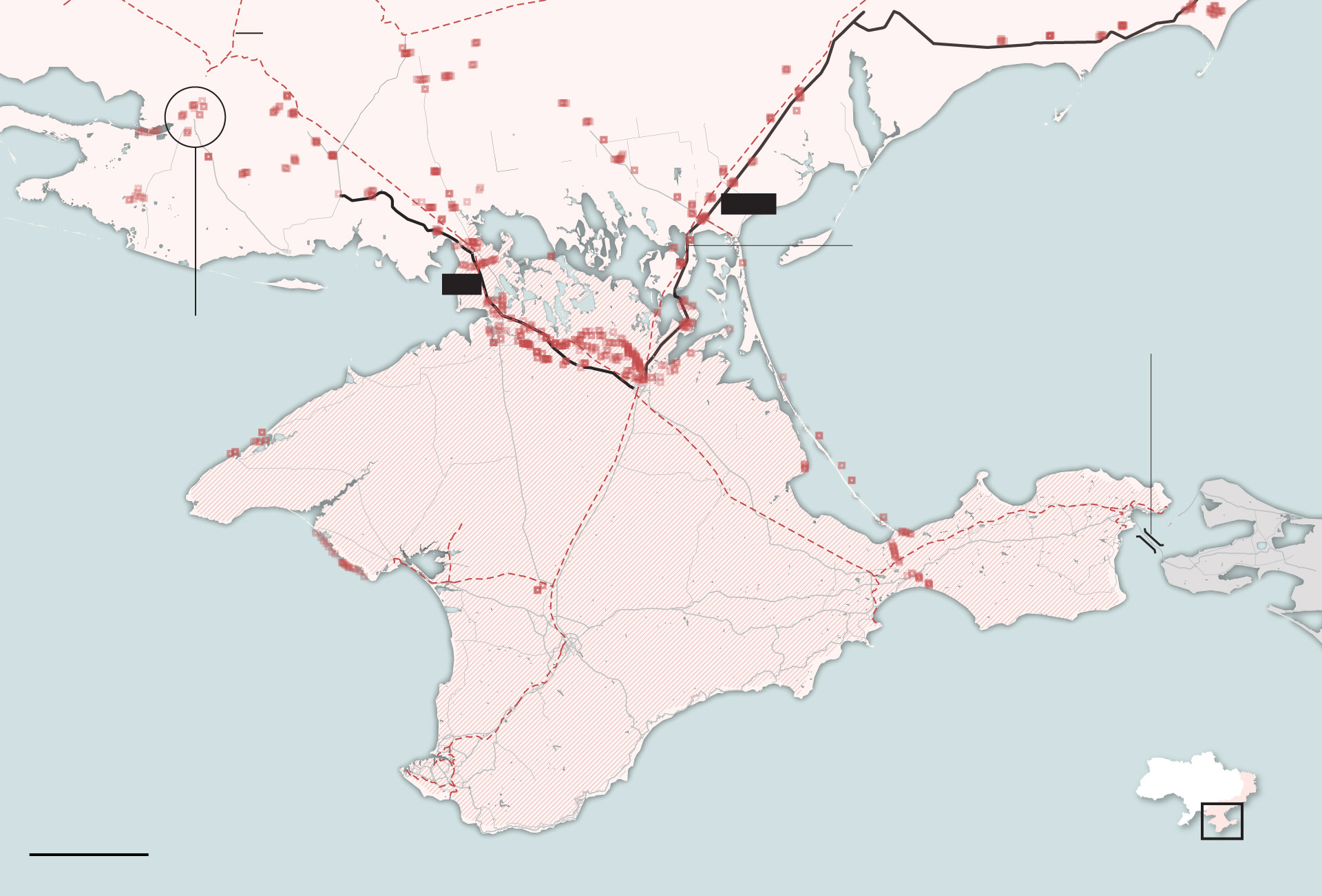John E. Herbst and Daniel Fried

Ever since Russia first invaded and occupied parts of Ukraine in 2014, far too many Western policymakers assumed that Crimea was Russia’s real red line — the one territorial conquest it could never part with. Russia itself has spent considerable energy stressing this to Western interlocutors since then.
In reality, Crimea represents a point of maximum leverage. It is exactly where Ukraine needs to make battlefield gains to bring this war to a successful conclusion.
There are signs that the Ukrainian counteroffensive is starting to ramp up. While Ukraine will ultimately strike where it anticipates the most favorable outcome, many observers think Ukrainian forces will eventually have to make a push in the south to cut the land bridge running from Russia through occupied Donbas to Crimea. If successful, such a move could be decisive. It would divide Russian forces arrayed across Ukraine’s south, and even potentially put Crimea itself in a vulnerable position.

The Kremlin has had time to dig in to defensive positions behind thousands of miles of front lines in the south and east. But the defenses are of uneven quality. Some of the fortifications have been thrown up hastily because of the fear that the Ukrainian counteroffensive would start sooner rather than later. Several Russian military bloggers have dubbed these fragile fortifications “the Fabergé line,” after Fabergé eggs.
A Ukrainian advance that put Crimea within Ukrainian artillery range would create a huge and expensive logistical problem for Russian President Vladimir Putin. His military and civilian administration in Crimea would be particularly threatened if Ukraine were also able to fully destroy, or even keep under steady fire, the bridge over the Kerch Strait connecting the peninsula directly with Russia. Such a setback would have political ramifications in Moscow, and the fissures that we currently see in the Putin regime would grow.

Since last fall — after Ukraine’s last successful counteroffensive — some of Putin’s principal lieutenants have been at each other’s throats. Wagner mercenary chief Yevgeniy Prigozhin and Chechen strongman Ramzan Kadyrov have sharply criticized Defense Minister Sergei Shoigu and Russia’s top general, Valery Gerasimov.
Prigozhin has even started blaming the Russian elites for what he acknowledged was Russia’s failure in the war. Leaked U.S. intelligence documents suggest that this erstwhile Putin ally was in contact with Ukrainian intelligence, looking to secure a respite for his beleaguered forces in exchange for information on regular Russian troop dispositions and movements. As one senior U.S. military officer remarked to us privately, the Russian military seems brittle.
Russia has adapted unevenly to this war. Despite predictions from many observers, Moscow did not significantly revise its tactics after its defeat around Kyiv and Kharkiv last year. This was evident in its costly human-wave attacks on Bakhmut over the past several months, and its disastrous armored attack against Soledar in January. Moscow’s efforts to mobilize more troops since its politically costly “partial mobilization” last fall has thus far fallen short. And Russia continues to suffer significant arms and ammunition shortfalls, exacerbated by sanctions and export restrictions.
That all said, it would be foolhardy to underestimate the challenges facing the Ukrainian forces in the weeks and months ahead. Russian lines might be less formidable than they seem from satellite imagery, but all things being equal, it’s easier to defend lines than to breach them. Russia’s armed forces might not have adapted as quickly to the realities of modern warfare as the Ukrainians have, but they have learned nonetheless. They have gotten better at electronic warfare — in blunting Ukrainian attacks and at directing their own strikes against Ukrainian positions.
Opinion writers on the war in Ukraine
Post Opinions provides commentary on the war in Ukraine from columnists with expertise in foreign policy, voices on the ground in Ukraine and more.
Columnist David Ignatius covers foreign affairs. His columns have broken news on new developments around the war. He also answers questions from readers. Sign up to follow him.
Iuliia Mendel, a former press secretary for Ukrainian President Volodymyr Zelensky, writes guest opinions from inside Ukraine. She has written about trauma, Ukraine’s “women warriors” and what it’s like for her fiance to go off to war.
Columnist Fareed Zakaria covers foreign affairs. His columns have reviewed the West’s strategy in Ukraine. Sign up to follow him.
Columnist Josh Rogin covers foreign policy and national security. His columns have explored the geopolitical ramifications of Russian President Vladimir Putin’s war in Ukraine. Sign up to follow him.
Columnist Max Boot covers national security. His columns have encouraged the West to continue its support for Ukraine’s resistance. Sign up to follow him.
1/6End of carousel
Nevertheless, though it will be a challenge, cutting the land bridge is achievable. With additional stocks of long-range artillery and missiles, as well as with more armored vehicles and fighter jets, Kyiv would have a good shot at breaking through this year. Russian supply depots are currently situated more than 60 miles behind the front line, just out of reach of the HIMARS that the United States had supplied to initially devastating effect. Additional supplies of weapons with at least as much range as British Storm Shadow missiles could be a game changer. Beyond disrupting supply lines, such weapons could also be used to destroy the bases on the Crimean peninsula from which Iranian drones are raining destruction on Ukraine’s infrastructure. And F-16s, which might start getting delivered later this year, would provide much-needed air support as ground operations pick up tempo.
In any case, the West should not buy the argument that Putin will never give up, and that therefore Ukraine must settle the war on Putin’s terms. Indeed, Russia has had to accept losing wars in the past. The Crimean War, the Russo-Japanese War, World War I, and its invasion of Afghanistan are but four standout examples. The war in Ukraine will be no different. A military defeat in a war of choice is not easy for any country to swallow. But it is also not existential.
Putting serious pressure on Crimea is the fastest way to end the war on conditions acceptable to Ukraine. Kyiv does not want a negotiated cease-fire that Moscow would exploit to rearm and resume the war at a more propitious time. Only this kind of ringing defeat will force Russia to finally accept Ukraine as a fully sovereign state.
A stalemate born of an overabundance of Western caution, on the other hand, will just embolden Putin to keep trying — and needlessly prolong Russia’s hideous war of aggression.
What to know about Ukraine’s counteroffensive
The latest: The Ukrainian military has launched a long-anticipated counteroffensive against occupying Russian forces, opening a crucial phase in the war aimed at restoring Ukraine’s territorial sovereignty and preserving Western support in its fight against Moscow.
The fight: Ukrainian troops on Wednesday night intensified their attacks on the front line in the southeast region, according to multiple individuals in the country’s armed forces, in a significant push toward Russian-occupied territory.
The frontline: The Washington Post has mapped out the 600-mile front line between Ukrainian and Russian forces.
How you can help: Here are ways those in the United States can support the Ukrainian people as well as what people around the world have been donating.
No comments:
Post a Comment